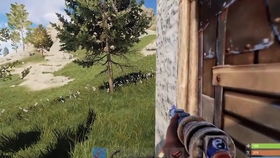Sanding Rust Off Metal: A Comprehensive Guide
When it comes to maintaining the integrity and appearance of metal surfaces, dealing with rust is often a top priority. Rust not only compromises the structural integrity of metal but also detracts from its aesthetic appeal. Sanding rust off metal is a common and effective method to restore its former glory. In this article, we will delve into the various aspects of sanding rust off metal, including the tools and techniques required, the importance of proper preparation, and the best practices to ensure a successful outcome.
Understanding Rust

Rust is the result of a chemical reaction between iron and oxygen in the presence of moisture. This reaction forms iron oxide, commonly known as rust. It is essential to understand the nature of rust before attempting to remove it, as it can affect the effectiveness of your sanding efforts.
| Component | Description |
|---|---|
| Iron | The base metal that reacts with oxygen to form rust. |
| Oxygen | The element that combines with iron to create rust. |
| Moisture | The presence of water facilitates the rusting process. |
| Iron Oxide | The compound formed when iron reacts with oxygen, commonly known as rust. |
By understanding the components involved in rust formation, you can better appreciate the importance of removing rust thoroughly to prevent future corrosion.
Tools and Materials Needed

Before you begin sanding rust off metal, it is crucial to gather the necessary tools and materials. Here is a list of items you will need:
- Sanding Paper: Various grit levels, such as 80, 120, 220, and 400 grit.
- Sanding Block: A flat, wooden block to hold the sandpaper in place.
- Sanding Sponges: Ideal for curved or contoured surfaces.
- Wire Brush: To remove loose rust and debris.
- Steel Wool: For finer sanding and polishing.
- Safety Glasses: To protect your eyes from debris.
- Masking Tape: To protect areas you do not want to sand.
- Paint Thinner or Solvent: To clean the surface after sanding.
Ensure you have all the necessary tools and materials before starting the sanding process to avoid interruptions.
Preparation

Proper preparation is key to achieving a successful sanding outcome. Here are some essential steps to follow:
- Remove Loose Rust: Use a wire brush or steel wool to remove any loose rust or debris from the surface.
- Mask Off Areas: Use masking tape to protect areas you do not want to sand, such as decals or lettering.
- Clean the Surface: Wash the metal surface with soap and water to remove any dirt or grease. If necessary, use a solvent or paint thinner to clean stubborn stains.
- Check for Underlying Issues: Inspect the surface for any underlying issues, such as cracks or holes, that may need to be addressed before sanding.
By taking the time to prepare the surface properly, you will ensure a more effective and efficient sanding process.
Sanding Techniques
Once you have prepared the surface, it is time to start sanding. Here are some essential techniques to keep in mind:
- Start with a Coarser Grit: Begin with a coarser grit sandpaper, such as 80 or 120, to remove the bulk of the rust.
- Work in Circular Motions: Use circular motions to sand the surface, applying even pressure to avoid creating uneven spots.
- Gradually Move to Finer Grits: Once the bulk of the rust is removed, switch to finer grits, such as 220 or 400, to achieve a smoother finish.
- Use Sanding Sponges for Curved Surfaces: For curved or contoured surfaces, use sanding sponges to reach difficult areas.
- Clean the Surface Regularly: Period
